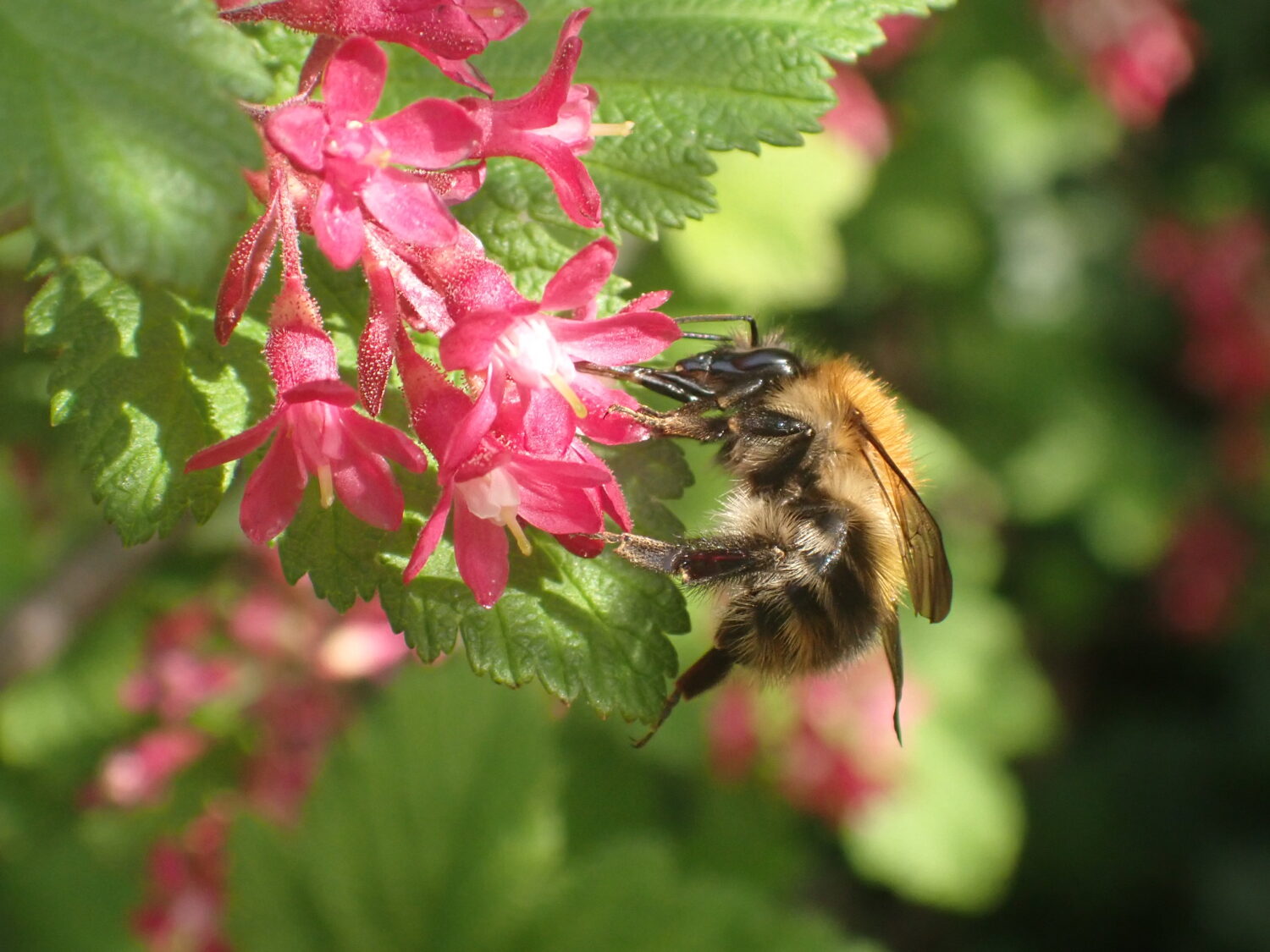At the height of spring, queen bumblebees are out in force. Local naturalist, Charlotte Rankin, guides you through seven queen bumblebees you are likely to encounter this spring.
Queen Bumblebees are harbingers of spring and are the first bees to be observed in the year. Throughout spring, queen bumblebees can be observed nest-searching. This is characterised by a zig-zagging flight low over the ground. Queen Bumblebees also make the most of early-flowering wildflowers such as Willow. When you spot a queen with pollen loads, it is a sure sign that she has settled on a place to nest. Of the 19 bumblebee species to be found in the North East, there are seven bumblebee species that are most likely to be encountered. This short post guides you through these species.

Buff-tailed Bumblebee Bombus terrestris
Queen Buff-tailed Bumblebees are one of the first bumblebees to be seen in the year. This bumblebee nests underground and can be found in a variety of habitats.
Queens are the largest queen bumblebees to be found in the UK. Queens have two yellow bands: one behind the head and one on the abdomen. As the name suggests, the tail is buff-coloured. However the tail does vary from off-white to tawny.
This species is often confused with the White-tailed Bumblebee. However, queen White-tailed Bumblebees have lemon-yellow bands and a pure white tail.

Early Bumblebee Bombus pratorum
The Early Bumblebee is a small species of bumblebee. Nests are underground and contain no more than 100 workers. As the name suggests, queens are out early in the year. Making the end of a nest, males are also produced earlier than other bumblebee species. This can be as early as late April in the south.
Queens are noticeably smaller than other queen bumblebees. Queens have a small orange-red or rosy tail. The small extent of the tail means it can be harder to see. There are also two lemon yellow bands: one behind the head and one on the abdomen.

Red-tailed Bumblebee Bombus lapidarius
The Red-tailed Bumblebee nests underground. The nests are large, often containing over 300 worker bumblebees. This was one of the first bumblebee species to be recorded in the North East. The first record comes from the notebook of Albany Hancock dated 1827.
Queens are very distinctive with a black-haired body and a large crimson-red tail. The coat also has a velvety appearance. Queens do not have any yellow bands.

White-tailed Bumblebee Bombus lucorum agg.
The White-tailed Bumblebee is in fact a group of three species that can only be separated by DNA analysis. White-tailed Bumblebees nest underground and typically contain around 200 workers.
Queens have clean white tails. Queens have two bright yellow bands: one behind the head and one on the abdomen.

Garden Bumblebee Bombus hortorum
Garden Bumblebees are have the longest tongue of any bumblebee species. This bumblebee nests underground and nests contain around 150 workers.
Garden Bumblebees have long, thin faces that are often described as ‘horse-shaped’. Accompanying this long face is a long tongue. This means that you will commonly find this bumblebee on tubular flowers. The long, thin face is a key identification feature.
Queens have a white tail and three yellow bands. There is one yellow band behind the head, one at the bottom of the thorax and one at the top of the abdomen. The latter two bands are close together and form a midriff band.

Tree Bumblebee Bombus hypnorum
The Tree Bumblebee is a recent arrival to both the North East and Britain. It arrived from mainland Europe in 2001 and has rapidly spread across the country. It was first recorded in the North East in 2007.
Its typical nesting habit is unqiue among British bumblebees, preferring to nest aerially in tree cavities, roof eaves or old bird boxes.
Queens have a white tail with a ginger-brown thorax and black abdomen. This colour pattern is unique among British bumblebees.

Common Carder Bee Bombus pascuorum
Common Carders nest amongst dense vegetation, using dry moss and grass as nesting material. Nests live longer than other bumblebee species and can last up to six months. Another brown-haired Carder, the rarer Moss Carder Bee Bombus muscorum, is also found in the North East.
Queen Common Carders are gingery-brown bees with varying amounts of black hairs on the abdomen. Those with greater amount of black hair can be confused with Tree Bumblebees. However, Common Carders never have a white tail.
Join the North East Bee Hunt
Urban or rural, beginner or expert, we need your help to record eight distinctive bees across the North East this spring and summer.
Your records can add to our understanding of bees in the region and inform conservation and monitoring efforts.
Taking part is easy and every record counts, wherever you live in the region. Records of all bee species are encouraged.
